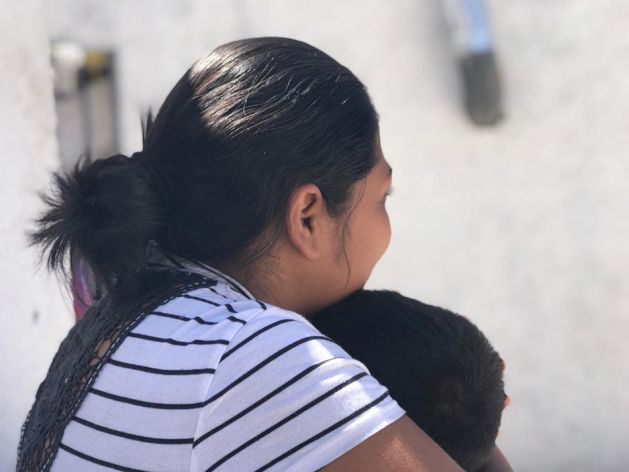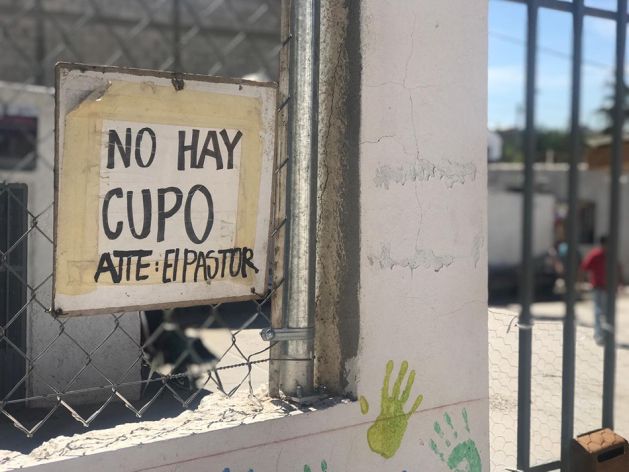Desperation and Fear on the Mexican Border

SAN FRANCISCO, California, US, Jul 18 (IPS) - Ariana Sawyer is with the US program at Human Rights Watch
On the 2,000-mile journey from San Pedro Sula, Honduras, to the US-Mexico border, the 20-year-old asylum seeker and her 16-year-old brother took turns sleeping every time they managed to catch a ride or get on a bus. She told me they kept each other safe that way.
The asylum seeker – I'll call her Gloria because she was afraid to have her real name published – said she fled Honduras with her little brother after a member of a gang there stalked and threatened to kill her for refusing to be his girlfriend.
When the siblings turned themselves in to US Border Patrol near El Paso, Texas, in mid-April, agents separated them.
"Where are you taking him?" she asked.
"He's going to a better place than you," she said an agent replied. But as we have found, Gloria's brother, like other children in Border Patrol detention, certainly was not going to a good place.
Gloria said she spent six days in Customs and Border Protection custody without sunlight in an overcrowded cell with no shower or ready access to water. She was then placed in the Trump administration's Migrant Protection Protocols (MPP) or "Remain in Mexico" program and sent alone to Mexico. She is expected to wait there for the duration of her asylum case, which could take months or years. She will be allowed to travel to the US only to attend immigration court hearings.
When I interviewed her in the border city of Ciudad Juarez, Mexico, in May, she hadn't heard from her brother in weeks. She seemed more worried about him than anything else, but her own situation was dire.
Like the other asylum seekers we interviewed about the cruel and chaotic MPP program, Gloria found it hard enough to survive, let alone pursue her asylum case.
The shelter where she spoke to me has a limit on the number of days she can stay. Shelter operators explained they don't want to kick vulnerable people out, but they feel they must give priority to those US authorities have most recently sent to Mexico, since they're the most disoriented.

One shelter operator broke down and cried when we asked why one family was told that day would be their last.
Asylum seekers in need of shelter outnumber available beds in Ciudad Juarez 11 to 1, though one Mexican official told me that 20 to 30 percent of those waiting had already left with plans to try to cross the border between the ports of entry, probably in more remote, dangerous areas. Meanwhile, many of those in the program say they have family in the US to whom they could be released.
Compared to some of the most recent rounds of asylum seekers sent to Mexico whose preliminary immigration court hearings were scheduled for the summer of 2020, Gloria is somewhat better off. Her first hearing is in August.
As long as she was allowed to stay at the shelter, she said, she was avoiding going outdoors. Mexico is experiencing record levels of murders – the highest number of intentional homicides since the country began keeping track in the late 90s – which have hit Ciudad Juarez and other Mexican border towns particularly hard, and migrant women there are especially vulnerable, US federal asylum officers have said.
"I know that in any moment something could happen to me," Gloria said.
We initially decided to visit Ciudad Juarez after migrant rights advocates expressed the need to shine a light there, describing the city as a "black hole" to which asylum seekers were being sent – out of sight, out of mind.
And when one Congresswoman recently sent staff members to Ciudad Juarez to monitor the program, a Customs and Border Patrol official leaked some forms her office sent the government agency containing sensitive information about individual asylum seekers and accused her of trying to undermine the Border Patrol.
The US government is failing in its responsibilities toward asylum seekers by sending them to Ciudad Juarez and elsewhere in Mexico, where meaningful oversight is impossible. But those concerned about this mistreatment can do their part to end it. They can call on their members of Congress to end the funding for the program, oppose the separation of families, strengthen the asylum system, and pursue alternatives to detention.
Oscar Alberto Martinez Ramirez and his daughter, Valeria, reportedly died trying to swim across the Rio Grande because they were disheartened by the barriers to asylum put up by the Trump administration at ports of entry.
Lawmakers need to rein in an increasingly abusive border agency.
© Inter Press Service (2019) — All Rights Reserved. Original source: Inter Press Service
Where next?
Browse related news topics:
Read the latest news stories:
- Strengthening Indigenous Peoples and Local Communities Knowledge and Access Opens up Opportunities for Climate, Biodiversity and Desertification Action Tuesday, March 25, 2025
- The Ocean Creeps In: Tanzanian Coastal Communities Fight a Losing Battle Tuesday, March 25, 2025
- The Profound Rise of the Elderly Tuesday, March 25, 2025
- A Path Towards Ending Child Marriage Tuesday, March 25, 2025
- Yemen: One in two children severely malnourished after 10 years of war Tuesday, March 25, 2025
- Decades of progress in reducing child deaths and stillbirths at risk, UN warns Tuesday, March 25, 2025
- Seeds of Survival, Amid Conflict Sudan Is Saving Its Agricultural Future Tuesday, March 25, 2025
- ‘What’s Next?’ Women-led Movements Fear for the Future Monday, March 24, 2025
- Guterres to reduce UN aid ‘footprint’ inside Gaza following ceasefire collapse Monday, March 24, 2025
- South Sudan on the brink of civil war, top UN official warns Monday, March 24, 2025
Learn more about the related issues: